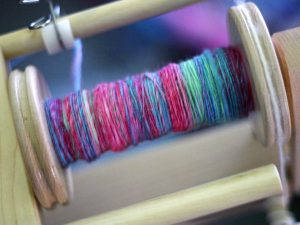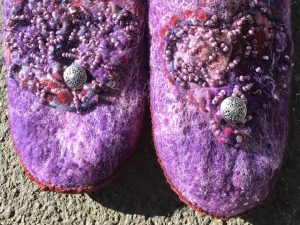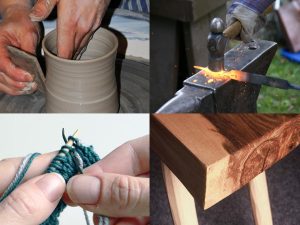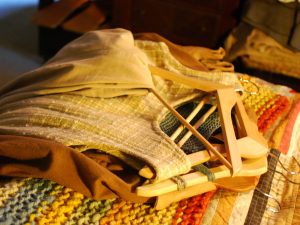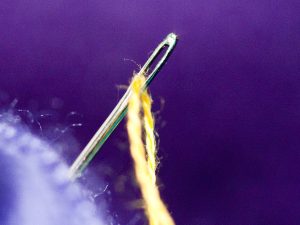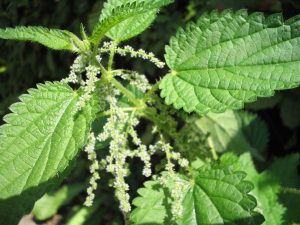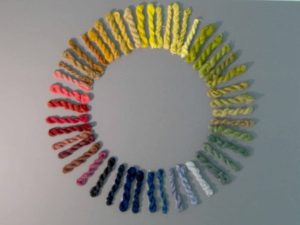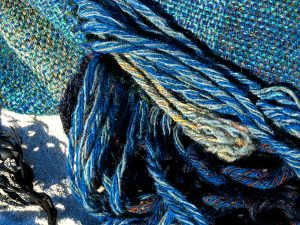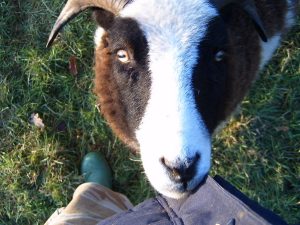Knitting & crochet - introduction
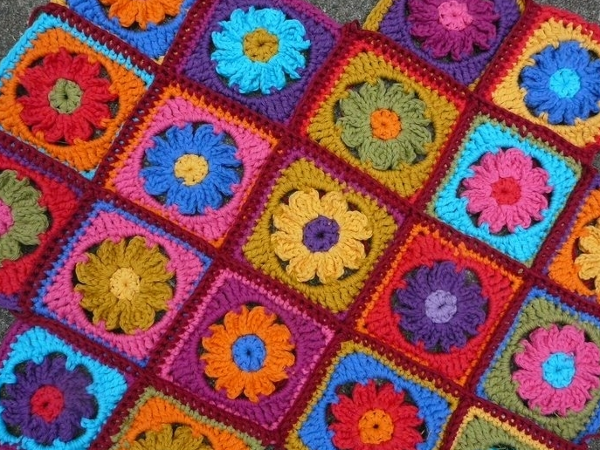
“I never just knit; I knit and think, knit and listen, knit and watch. Plus you get a useful or beautiful object at the end of it.” – Stephanie Pearl-McPhee
Contents
What are knitting and crochet?
They are ways of making ‘stretchy’ fabric with loops of yarn. Before knitting there was no stretchy fabric – so no socks (you need the stretchiness to get your feet in). Any stretchy fabric is knitted (or crocheted) – e.g. T-shirts (made on machines that do microscopic knitting); socks; scarves; sweatshirts etc. Knitting is a worldwide phenomenon – often to earn some extra cash, and in the West it’s a fast-growing hobby, with yarn and fibre festivals popping up all over the place. Most knitted garments for sale are produced by machine, but hand-knitting is making a comeback.
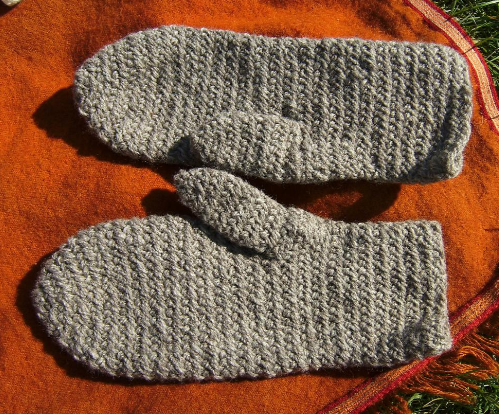
Knitting vs crochet
Knitting is done using two or more needles; crochet is done using one hook. Crocheted fabric is not as stretchy as knitted fabric, and is done one loop at a time rather than having a series of loops on the needle. With crochet, the result can be a bulkier fabric, so maybe not so good for socks. In the end it’s down to personal preference. Some people find knitting easier, some crochet, but being able to do one doesn’t help with the other, as they’re so different.
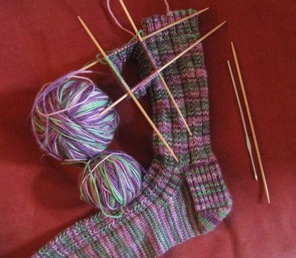
History
Knitting is a relatively recent invention compared to weaving. The oldest surviving artefacts are from 11th century Egypt, and that is generally considered to be the birthplace of knitting, although it’s difficult to be sure, as textiles are biodegradable and don’t last too well. The complexity of the Egyptian pieces seem to indicate that knitting is much older than this, however.
Nahlbinding was a technique using a single needle to produce fabric – a bit like sewing. It probably developed in several places at the same time, and is considered the precursor of true knitting.
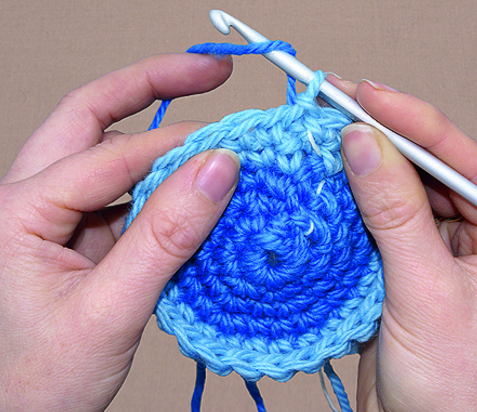
Knitting entered Europe with Muslims in Spain in the Middle Ages, and from there it was spread worldwide. It was particularly big in Scotland, and various types of knitted jumpers were an important part of the economy. Fishermen’s jumpers utilised the natural oils in the wool to keep fishermen warm. Often villages would have their own unique pattern, with the fisherman’s initials in the hem. If a body was washed up on a beach, it could be identified by the pattern and initials on the jumper.
Techniques & materials
There are two basic techniques – side to side or round and round. Then there are many variations of stitch patterns, traditions, conventions, etc, and many ways of constructing garments. Tubular knitting, using four or five needles, is probably the earliest form. Non-tubular / flat knitting is done with 2 needles – one in each hand, with a knob on the end to stop the yarn slipping off.
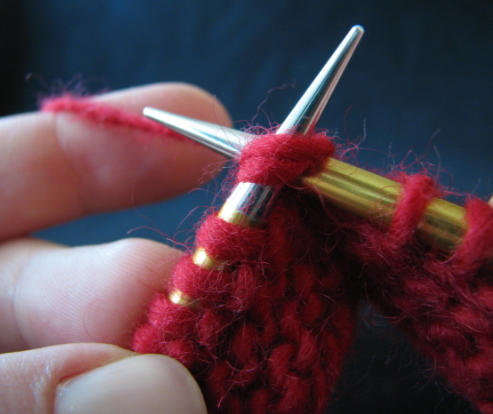
There’s a huge range of techniques. Fair Isle sweaters, for example, are produced very quickly using long, double-pointed needles and a knitting belt worn around the waist, with a padded leather bit on the front with holes in. Different surface designs, such as Aran sweater patterns, are made using cabling (groups of stitches crossed over each other), which makes the sweater thicker and keeps the wearer warmer.
There are particular traditions such as Icelandic knitting, using thick single yarns and classic colour patterns on sweater yokes; and there are a number of ways of knitting socks, mittens and other specific garments. Lace knitting creates holes by doing ‘yarn-overs’ to make a lacey open pattern such as that used in shawls. All can be learned via courses, groups and online.
You can knit with a range of different fibres – acrylic is probably the cheapest, but we’d urge you not to use it because of the high environmental impact of its manufacture. Natural fibres include wool (from sheep or other species such as alpacas), flax, hemp or even bamboo.
Size of needles
Needles come in a range of sizes – generally if you’re using thicker wool or want a lacier, more open texture, use bigger ones. If you’re knitting socks or anything with finer yarns or tight fabric, use smaller needles. There’s also a new-ish trend called ‘big knitting’ or ‘giant knitting’ that uses enormous needles or even broom handles to produce extremely chunky and very cosy blankets and rugs.

What are the benefits of knitting and crochet?
Personal / Self-provisioning
Gaining any craft skills can help meet your (and your family’s) needs, save you money and bring a lot of satisfaction and pleasure. If you enjoy it and are good at it, you could potentially gain an income or a job, by providing things for your community.
Knitting your own clothes works out cheaper than buying good-quality natural garments, although it’s not necessarily cheaper than buying poor-quality, synthetic ones. However, your clothes will look a lot better for a lot longer, and you won’t be contributing to the problems outlined here. You don’t need expensive (or large) kit either – just needles, which makes it an ideal activity to do whilst travelling. [NB: many airlines don’t let you on board with knitting needles, especially metal ones. Crochet hooks are easier. However, the only coherent advice we could give, environmentally, is not to fly anyway.]
Knitters can go anywhere and find like-minded people to hang out with, as there are so many knitting groups worldwide nowadays. It’s good for conversation, as we listen better when our hands are busy. It’s very relaxing too, and there’s evidence that knitting is good for mental health and general well-being.
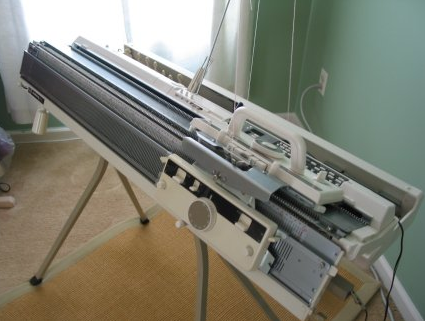
Environmental
You can produce your own clothes with an extremely low ecological footprint and totally traceable raw materials, or you can buy from someone locally who does the same (wouldn’t it be great if we knew the names of the people who made all of our clothes?). This is especially the case if done with hand-spun wool from local fleece.
You can also support local sheep farmers by buying only wool produced in your country – see here for more if you live in the UK – or you can use locally-grown plant-based yarns like hemp. This reduces the distance clothing has to be transported, reducing pollution, carbon emissions and resource use. Using 100% natural yarns removes concerns about microscopic synthetic fibres from washing textiles affecting water quality in oceans and killing aquatic life.
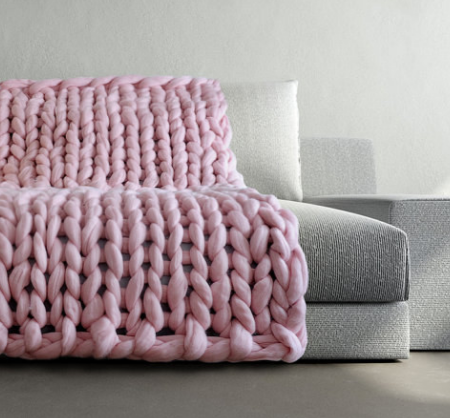
Democracy / decentralising power away from corporations
Providing things for ourselves in communities helps prevent extraction, decentralises power away from corporations (which makes it more difficult for them to corrupt democracy) and democratises work. This is particularly relevant in the textiles sector, as you’ll be helping support your local fibre producers, rather than corporate sweatshops.
Community / collapse preparation
Exchanging home-grown produce and home-made craft goods (etc.) strengthens community bonds, and in case of any kind of collapse scenario (broken supply chains, environmental destruction, financial crash, war, civil unrest etc.), we’re going to have to look after ourselves in our communities, and so the more people with useful skills the better. In fact, in a collapse scenario, if we want textiles and fabrics at all, we’ll need to make them in our communities.
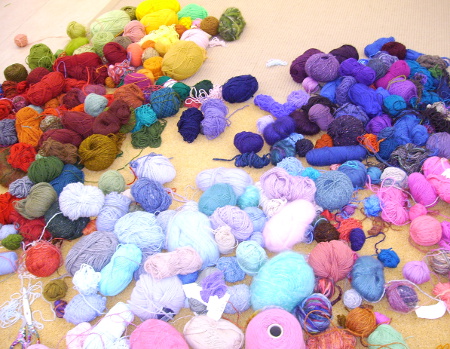
What can I do?
A good starting point might be a visit to a local yarn shop to ask if they have classes. A lot of them do nowadays, or they might know local groups that you can join.
Then it’s up to you how involved you get. You might want to spin and/or dye your own yarn, learn how to make various garments – maybe even go the whole hog (so to speak) and keep sheep. The Natural Fibre Company is a wool processor for small producers of wool – even just one fleece. It will be washed, carded and spun, and you’ll get yarn back. It deals with alpaca fleece too, as does the Border Mill.
As this is an environmental website, we’re of course going to advise you to go as natural as possible. This might mean that your clothes end up more expensive than corporate, synthetic garments, but they won’t contribute to ecological damage, sweatshops or corporate profits. See this article for more on this.
You’ll need to source local woollen or plant-based yarns. You can find them online, and for a start you can look here and here. Remember that most Merino wool comes from Australia, and there are issues with cruelty in Merino wool production as the sheep have extra folds of skin on their rumps that are often cut without using anaesthetic (it’s called mulesing). It’s possible to get Merino wool that has been produced humanely, but it’s expensive and has still travelled a long way, unless you live in a country that produces it.
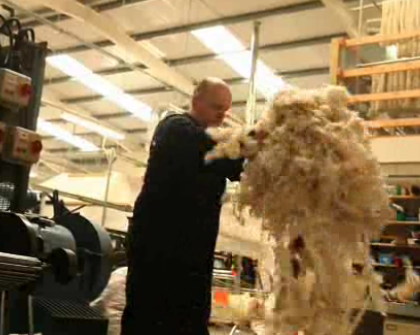
It’s better to buy wool that’s produced in your country. In the UK, Blue-faced Leicester, Shetland, Wensleydale, Mohair (made from the hair of the Angora goat) and yarn from other local producers are good options. Many producers now get their fibre spun into yarn, so this is available even if you don’t spin.
Knitting can be easy if making a plain scarf, or very complicated if you’re making a Sanquhar glove or complex shawl. If you’re in a knitting group or have a friendly local yarn shop, or a friend or family member who knits, you’ll be able to get help whatever level you’re working at.
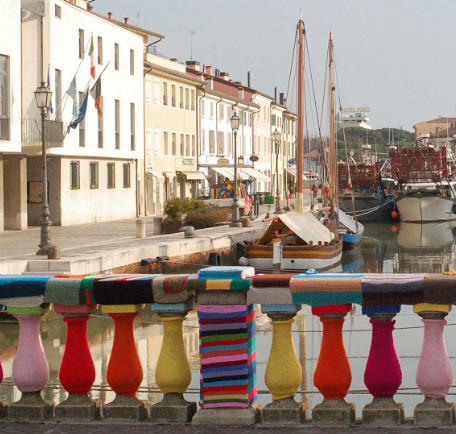
Further resources
- Knitting & Crochet Guild: charity preserving and nurturing knitting and crochet skills.
- UK Handknitting: promoting knitting in the UK; knitting groups.
- This intro is mostly about hand-knitting; here’s a guide if you’re thinking of buying a knitting machine.
- The Natural Fibre Company: wool processor for small producers of wool.
- WoolWork: supporting local wool and fibres.
- Crochet Pattern Central: lots of free crochet patterns
- Laughing Hens: lots of free knitting patterns
- Knitting Help: free video tutorials and patterns
Specialist(s)
Thanks to Janet Renouf-Miller of Create with Fibre for information.
The specialist(s) below will respond to queries on this topic. Please comment in the box at the bottom of the page.
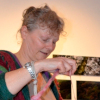
Janet Renouf-Miller runs Create with Fibre, and is a registered teacher with the Association of Weavers Spinners and Dyers and has taught at their renowned Summer School. Janet has also taught courses for many spinning and weaving Guilds, knitting groups, shops and voluntary organisations. She is the author of How to Spin (just about anything).

